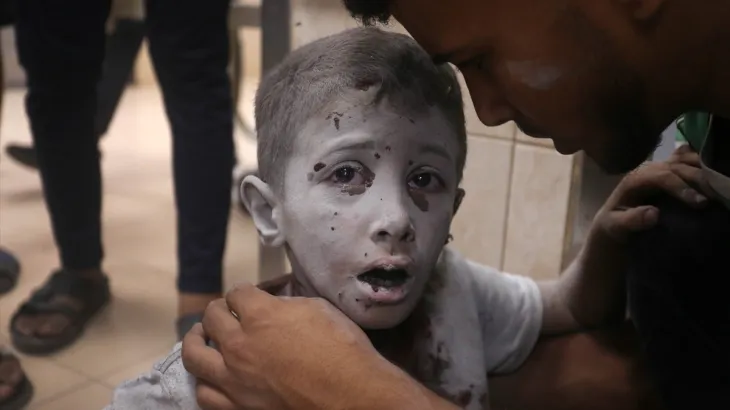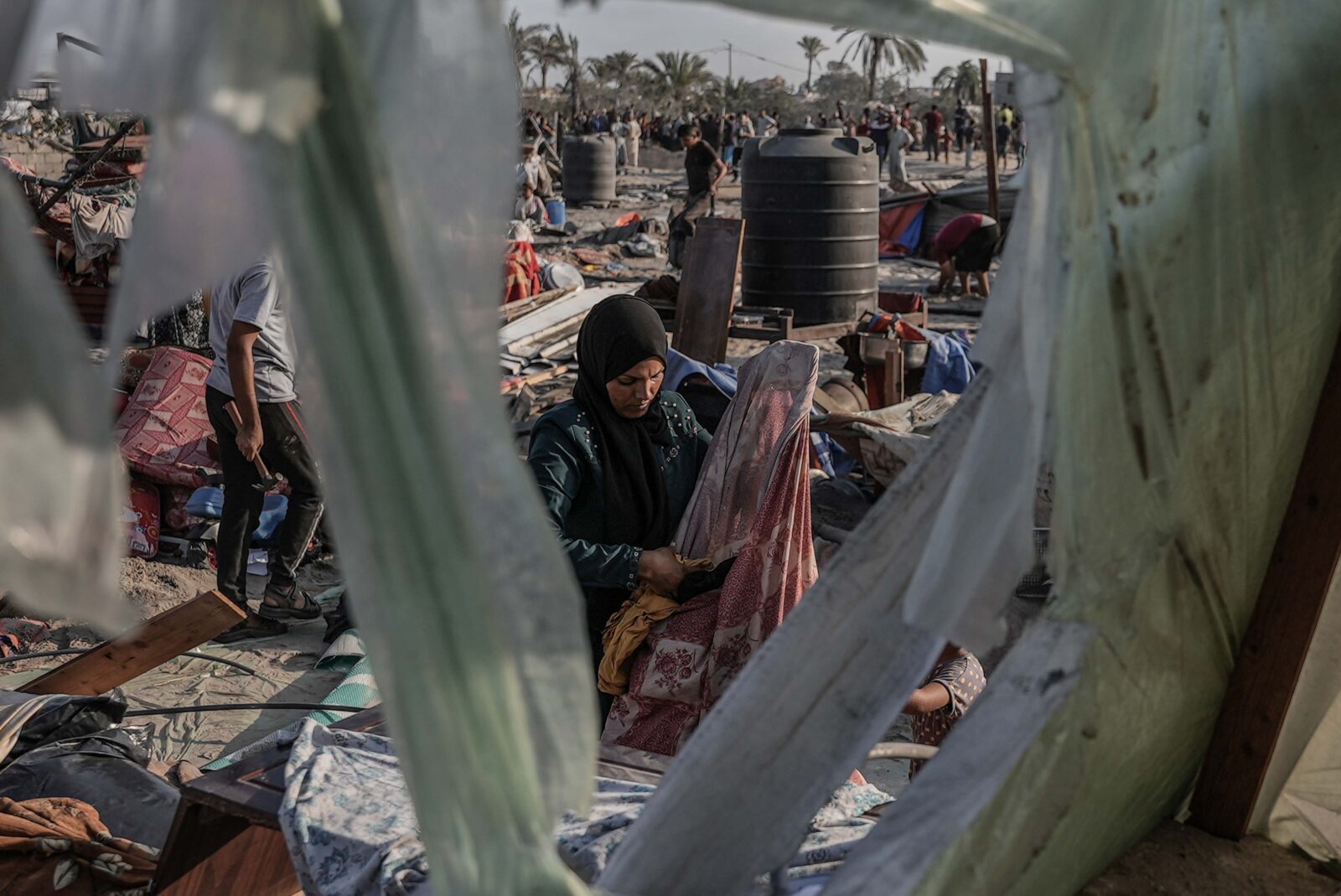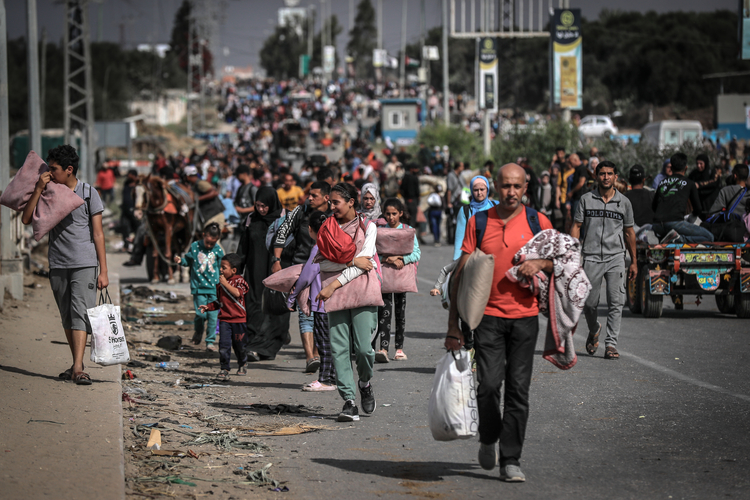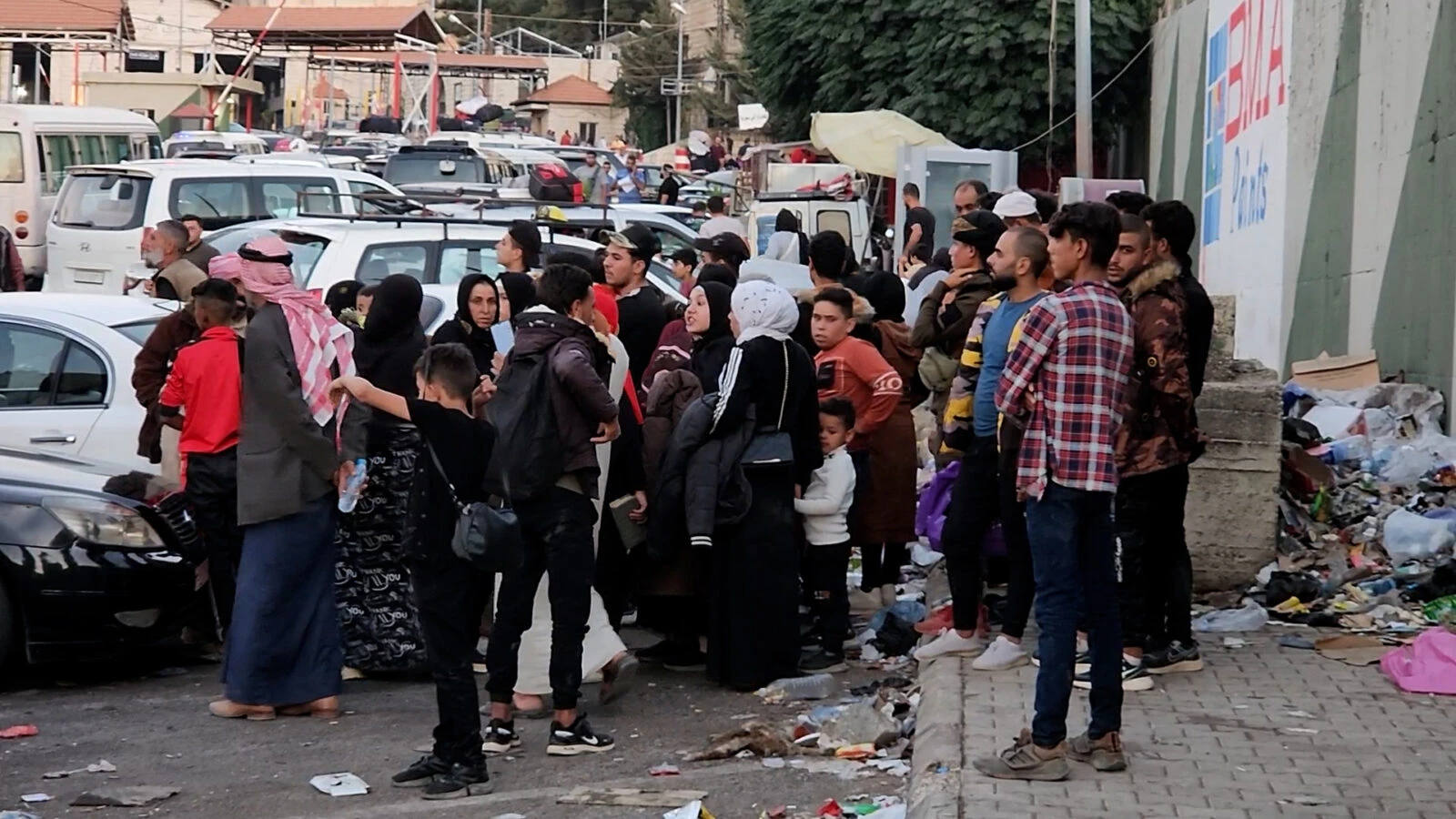Tragedy in Gaza: Nearly 16,500 children killed since Oct. 7
 KHAN YUNIS, GAZA - AUGUST 06: Miada Abu Anza (32), who was displaced for the 7th time due to the Israeli attacks, takes shelter with her 5 children in a school belonging to the United Nations Relief and Works Agency for Palestine Refugees in the Near East (UNRWA) in Khan Yunis, Gaza on August 6, 2024. Anza, whose husband and father are imprisoned; brothers and uncles are lost their lives in Israeli attacks, struggles under war conditions as the humanitarian crisis in the region is gradually deepening due to the Israeli army's attacks on Gaza. ( Doaa Albaz - Anadolu Agency )
KHAN YUNIS, GAZA - AUGUST 06: Miada Abu Anza (32), who was displaced for the 7th time due to the Israeli attacks, takes shelter with her 5 children in a school belonging to the United Nations Relief and Works Agency for Palestine Refugees in the Near East (UNRWA) in Khan Yunis, Gaza on August 6, 2024. Anza, whose husband and father are imprisoned; brothers and uncles are lost their lives in Israeli attacks, struggles under war conditions as the humanitarian crisis in the region is gradually deepening due to the Israeli army's attacks on Gaza. ( Doaa Albaz - Anadolu Agency )
Oct. 7, 2024, marks one year since the start of a brutal war by Israel on Palestine, a war that has devastated the Gaza Strip, claimed tens of thousands of lives and displaced millions. What started as a surprise attack on Israel has spiraled into one of the deadliest escalations in the region’s history, with Palestinian civilians bearing the brunt of the violence.
Nearly 16,500 children killed by Israel
According to Gaza’s Ministry of Health, more than 41,788 Palestinians have been killed in Israeli airstrikes, with nearly 16,500 children among the dead. Over 96,794 people have been injured, while over 10,000 remain missing, many feared to be trapped under rubble from the relentless bombings. In Israel, the death toll has been revised to 1,139, with more than 8,730 injured from Hamas’ initial attacks and the subsequent violence.
The situation is equally dire in the West Bank, where at least 723 Palestinians, including 160 children, have lost their lives. More than 5,750 people have been injured amid increasing violence in the occupied territories.

Dire humanitarian situation
Gaza’s infrastructure has been obliterated. According to data from the United Nations and the World Health Organization (WHO), more than half of Gaza’s homes have been either damaged or destroyed. Commercial facilities have been hit hard, with 80% no longer operational. The destruction extends to schools, with 85% of buildings either damaged or rendered useless. Even Gaza’s vital health care system is collapsing – 17 out of 36 hospitals are barely functioning, and 65% of the region’s road networks and cropland have been damaged, cutting off access to essential supplies.
A year of bombardment has left the population with nowhere safe to go. The Israeli military has issued evacuation orders, dividing Gaza into more than 600 numbered blocks, but electricity and internet blackouts have made it impossible for many residents to access these warnings. Thousands of civilians remain trapped, unable to flee the violence.

Collapse of Gaza’s health care system
The war has decimated Gaza’s health care system, leaving it ill-equipped to handle the overwhelming number of casualties. WHO estimates that over 6% of Gaza’s population has been killed or injured since the conflict began. As the fighting rages on, Gaza’s hospitals are operating at a fraction of their capacity, with only half of them partially functional. Medical supplies are running out, and medical staff are being pushed to their limits.
According to Doctors Without Borders, their teams have treated over 27,500 patients for violence-related injuries, most of them from Israeli shelling. Surgeons are operating without anesthesia, and patients are dying on hospital floors due to a lack of resources. The organization’s medical teams have even had to treat their own colleagues and family members in a grim reminder of the conflict’s inescapable toll.
“This has been a year of unrelenting horror and violence against civilians, with no end in sight,” said Avril Benoit, chief executive officer of Doctors Without Borders, U.S. She called for an immediate cease-fire, stating it is the only way to stop the spiraling violence and bring lifesaving care to the people of Gaza.

1.9M Palestinians displaced
Nearly 1.9 million Palestinians have been displaced as a result of the conflict, forced to seek refuge in ever-shrinking areas. Israel’s blockade of Gaza, now in its 17th year, has further strangled the already fragile economy. The blockade, along with Israeli and Egyptian border closures, has prevented food, water, and medical supplies from reaching those in desperate need. Humanitarian organizations have struggled to deliver aid due to the ongoing violence and destruction of Gaza’s road networks.
According to WHO, over 96% of children and women aged 6 to 23 months in Gaza are not meeting their nutritional needs. Malnutrition is rampant, and children are particularly vulnerable, with over 4,400 treated for severe acute malnutrition since January. Humanitarian corridors remain blocked; out of 15,600 medical evacuation requests, only 32.9% have been approved.
Violence spreads
The conflict, which began in Gaza, has spread beyond its borders. Violence has surged in the West Bank and Lebanon, and tensions across the Middle East are at their highest levels in years. International efforts to broker peace have largely failed, and both Israel and Hamas have refused to agree to sustained ceasefires.
Israel faces increasing scrutiny from international organizations, with accusations of war crimes and a genocide case pending at the International Court of Justice. Meanwhile, Hamas remains defiant, continuing its rocket attacks into southern Israel.

International community inefficient
One year on, the conflict shows no signs of ending and the international community grapples with how to respond. Humanitarian groups have called for urgent action to alleviate the suffering in Gaza, including the immediate opening of borders for aid, the lifting of the blockade, and a long-term cease-fire agreement.
Chris Lockyear, Doctors Without Borders’ secretary general, condemned the continued military support provided to Israel by its allies, particularly the United States. “For one year, Israel’s allies have continued to provide their military support to Israel, as children are killed en masse, tanks fire on deconflicted shelters, and fighter jets bomb so-called humanitarian zones,” said Lockyear. “The only way to stop the killing is with an immediate and sustained ceasefire.”
With the conflict stretching into its second year, the toll on Gaza’s civilians is likely to increase, raising further questions about the international community’s role in bringing the violence to an end.



